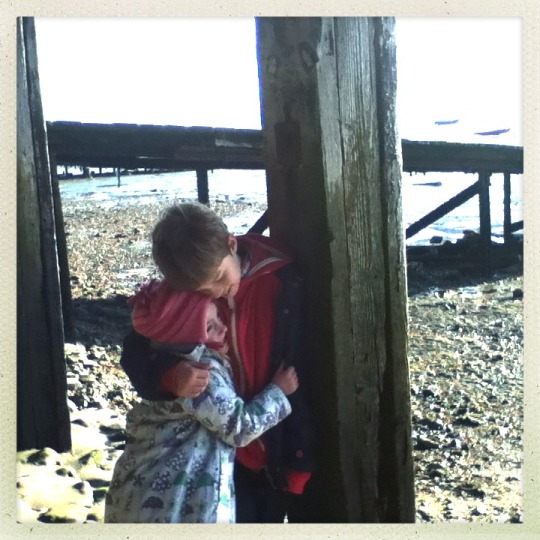#ina's 1982 film
Text
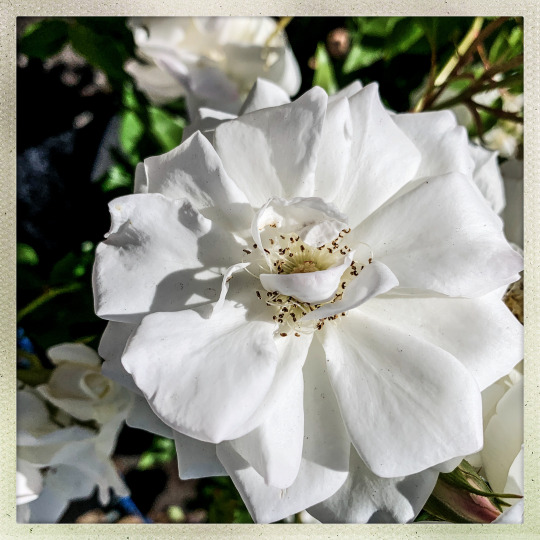
Sunday Flowers
Summer Musings 2023
iPhoneXR Hipstamatic Photography
Original Photographers
Photographers On Tumblr
Lowy Lens, Ina's 1982 Film, No Flash
#Hipstamatic#Original Photographers#Photographers On Tumblr#roses#white rose#summer#art#capiolumen#iphone#iphoneXR#iphotography#lowy Lens#ina's 1982 film#no flash
31 notes
·
View notes
Text
“mrs. frisby and the rats of NIMH” by robert c. o’brien
finished: july 11, 2023
this is a childhood throwback for me, though i had only ever seen the movie previously. although it’s a short children’s novel, due to its subject matter it definitely does not feel watered down or sugarcoated. as a kid, i loved seeing the animals interact with one another and the perspective you get from seeing a field mouse provide for her family. the don bluth film was one of my core movies in rotation, i remember loving the music and jeremy the crow especially.
as an adult reading the novel for the first time, i appreciate how closely the movie follows the story, although the main difference in the story i do strongly prefer the book; i don’t think this story needs a fantasy element and i think around that part in the movie is where it would kind of lose my interest. up until that point, the story seems pretty realistic, but i guess there existed a need for some kind of theatrics. i don’t hate the movie’s ending, but i definitely appreciate the original work much more. i also deeply appreciate the topics handled in this short novel, which include some of humanity’s blindspots and shortcomings. i also like that the original novel doesn’t have jenner in it actively ever, and he’s “off screen” for the action but still a pivotal role. again, i know it’s hollywood or whatever, but the jenner vs. justin and nicodemus sabotaging feels like projecting human behavior. these rats were given a gift of intelligence, but we’re supposed to believe that jenner’s main focus in life post-NIMH is revenge? humans absolutely, but i think the point of the novel is to show that different animals and species move differently. the only thing i kind of preferred the movie over was jeremy having a bigger, more comedic role, but for the purpose of remaining realistic and believable, i understand why jeremy has his part in the beginning and then that’s just sort of it with him.
i don’t think a novel like this could be published today catered to a young audience, but i think it introduced some of humanity’s pitfalls without being too grim. this is just how the animals have come to deal with humans and vice versa. the novel isn’t saying we need to do anything specific about it or feel a certain way, it just is our natural world. i think the blatant realness presented in this book allows for the reader to gain empathy for pretty much every character in the novel. we aren’t made to hate the farmer, for instance, but we are to understand from the rodents’ perspective, they’re just trying to survive and predict the farmer’s next steps.
it’s a cute story that isn’t corny or afraid to introduce darker themes like death to children without being gratuitously graphic or obscene. i enjoyed the different perspective and think this is entirely the point of storytelling, to present others’ perspectives fully fleshed out. it has always made me think twice about considering all rodents vermin.
fun random fact about the 1982 don bluth film: the person who voiced timothy brisby (albeit a small role for this story) later came out as transgender and has successfully transitioned. way to go, ina fried!
rating: 7/10 really enjoyed but wouldn't necessarily recommend
1 note
·
View note
Text
2 REMARKABLE WRITERS IN DIFFERENT PERIOD
The Post Edsa Revolution
Nicomedes Márquez Joaquin

Credit Picture
What has Nick Joaquin contributed to Philippine literature?
Joaquin was regarded by many as one of the most eminent Filipino writers of the English language. He focused most of his writing on the Spanish colonial era, the rich Filipino heritage, and the complexities of the human mind. In 1976, he received the national artist for literature title.The Philippine National Artist for Literature designation and rank were given to Joaquin. Along with José Rizal and Claro M. Recto, he has been hailed as one of the most influential Filipino authors.This story's author, Nick Joaquin, had a unique writing style; he began his narrative with a flashback. Overall, it is still a wonderful and great story. The moral of the narrative was to think about what marriage really means. To have a successful marriage, a wife and husband must communicate with one another.
Nick Joaquin was a very timid and mysterious writer. Even his reclusive nature and preference for anonymity could not conceal the genius behind his pseudonym, Quijano de Manila, when he was asked to fill out a biographical form for the English-language journal Philippine Review in 1943, he simply wrote "25 years old, salesman."
Because of his extreme seclusion, Joaquin refused to reveal his exact birthday up until the day he passed himself, claiming he did not want people to come over to celebrate. His birthdate is given as either May 4 or September 17, 1917, depending on the source. We can infer that he was actually born on May 4 because he was named after Saint Nicomedes, whose feast day is on that day.
Nicomedes Marquez Joaquin, sometimes known as Nick Joaquin, is a towering literary personality with an unrivaled body of work. His short stories, including May Day Eve and The Summer Solstice, are now required reading in high schools in the Philippines. These are short stories he wrote and published soon after the Second World War, an experience that left him visibly unsettled and longing to go to another country.
Source:
https://www.esquiremag.ph/long-reads/nick-joaquin-life-a00293-20190507-lfrm
Gilda Olvidado
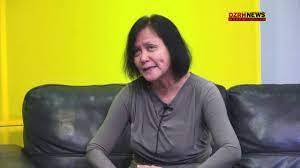
Credit Photo
Gilda was born on August 9, 1957, in Cebu City. She is the child of Guarda Olvidado and Gregorio Tan. Her primary schooling was completed in Maranding, Lanao del Norte. She spent two years studying journalism at Manuel L. Quezon University and one year studying chemistry at Adamson University, but she did not complete college.
Gilda had a great deal of admiration for Carlo J. Caparas while she was in her teens, and he encouraged her to consider a career in comic book writing.
Works for TV and film
Cha Lee's Angels, a comedy that she first published as a serial, was based on a well-liked 1970s American television program. However, when she wrote Kapag Puso ang Komiks, her second komiks novel, she found that she was more comfortable writing romance-drama.
A dramatic love story called Nasakdal was ordered by Atlas Publications.
Because of the success of her earlier works, she was in high demand and wrote romance novels for Valentine Romances, Twin Hearts, and Gemini Pocketbooks as well as Dahlia, a radio serial that was famously broadcast over DWWW. She made the decision to launch her own line of novels in 1993. Gilda publishes erotica for the Abante tabloid, particularly in the Brilgint section, in addition to her more well-known pieces.
She was the author of popular komiks novels including Sinasamba Kita (1982) and Dapat Ka Bang Mahalin? (1984), Ina, Kasusuklaman Ba Kita? Kung Mahawi man ang Ulap (1984), Ina? Pinulot Ka Lang (1986), Huwag Mo Kaming Isumpa (1985), and
Huwag Mong Itanong Kung Bakit (1988), Magkano ang Iyong Dangal (1988), Saan Nagtatago ang Pag Ibig (1987), Saa Lupa (1987), Babangon Ako at Dudurgin Kita (1989), and Huwag Mong Itanong Kung Bakit (1988).
She created the screenplays for the 1990 movies Maya, Bakit Kay Tagal ng Sandali, and Tayo na sa Dilim. Her poems were adapted for some Filipino telenovelas, including Babangon Ako't Dudurgin Kita (2008), Dapat Ka Bang Mahalin (2009), Kung Mahawi Man ang Ulap (2007), and Sinsamba Kita (2007). She also contributed to the writing of a few afternoon melodramas, including Kaputol ng Isang Awit (2008) and My Only Love (2007–2008). She also wrote Ina and Kasusuklaman Ba Kita? 2009, as well as Temptation of Wife (2012–2013).
Source:
https://en.wikipilipinas.org/view/Gilda_Olvidado
0 notes
Photo
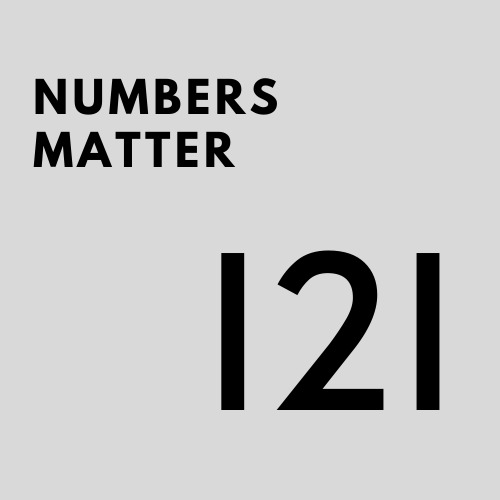
NUMBERS MATTER 121
チハルMK 、 おたこ、 川畑優、 AGF、 日野繭子、 大西蘭子
Thursday 22 October – 9pm (UK time) | Free
IKLECTIK YouTube Channel: https://youtu.be/HXFmH46kVEQ
Why numbers matter: Japan, a country with a population of over 124.2 million, is ranked at 121 in the Gender Inequality Index (GII) published by Human Development Reports 2020. Japanese women got the vote in 1946 – earlier than China (1949), Liechtenstein (1984) and Switzerland (1993).
In the ranking chart of the Global Gender Gap 2020, the top ten reads as follows: 1: Iceland; 2: Norway; 3: Finland; 4: Sweden; 5: Nicaragua; 6: New Zealand; 7: Ireland; 8: Spain; 9: Rwanda; 10: Germany. The UK ranked 21, following Albania at number 20. Though Japan falls some 100 places behind the UK, the latter’s ranking at 21 is nothing to be proud of either. Clearly there is plenty of work to be done in both countries. Hence, NUMBERS MATTER 121 features four special projects led by Japanese women: Chiharu MK, Otaco, Yu Kawabata (in collaboration with German poemproducer AGF) and Mayuko Hino.
Footnote: In the Press Freedom Index published in 2020, Japan and the UK don’t fare much better than in the GII. Out of 180 countries listed, the UK is ranked at 33 and Japan at 66. The countries listed from one to ten are as follows: Norway, Finland, Denmark, the Netherlands, Jamaica, Costa Rica, Switzerland, New Zealand, Portugal and Germany.
Programme:
“Paramnesia 2020” by CHIHARU MK
“Tomodachi” by OTACO
“Hamaderea Park ” by YU KAWABATA (sound) + AGF (visuals)
“Toyosu 2020″ by MAYUKO HINO

Chiharu MK is from Sapporo. Primarily trained as a composer, she studied the acousmonium, that is, the sound diffusion system, at INA-GRM studio in Paris. Since completing her studies in 2002, she has become an internationally recognised electroacoustic sound artist, either performing or creating sound installations for festival, gallery or non-concert hall spaces in Europe, Hong Kong and Japan. For Intersect 2015, she commissioned the non-Japanese artists Francisco López, Sogar and Taylor Deupree to compose sounds for a 17.1 multi Channel Speaker System (consisting of seven speakers + ten screen speakers + one woofer) in Sapporo city centre’s underground walkway. Chiharu MK has also released three solo CDs: https://www.studio-cplus.net/
Chiharu MK’s new multimedia work Paramnesia 2020 is based on her original piece for Hong Kong Art Centre’s 40th anniversary multi-channel Sound Forms festival in 2018.
This film shows her performing the piece inside Glass Pyramid, nicknamed Hidamari – Japanese for Sunny Spot, it’s the centrepiece of Sapporo’s Moerenuma Park, designed by Japanese American sculptor Isamu Noguchi (1904–1988). Construction work on the park actually began in the year Noguchi died, and it opened in 2005. The film also shows Chiharu MK recording on Ishikari beach, just north of Sapporo.
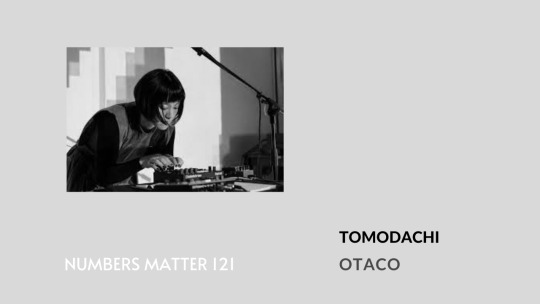
Taking her name from tako, the Japanese word for octopus, Otaco is originally from Japan’s northernmost main island Hokkaido. An electronic musician and vocalist, Otaco is one of the most vibrant and engaging performers to emerge from the alternative music scene anywhere in Japan.
Now living in Tokyo, she operates a home studio set-up of a rhythm box with a synthesizer; she samples and syncs sounds into a computer, running them into real-time sequences to construct her outre pop-electronica songs and instrumentals. Her music can be heard at https://otacosan.bandcamp.com/music. Otaco also plays guitar when she leads Gotou, an occasional rock trio formed out of homage to early 1980s West Berlin groups Mania D and Malaria!. She appeared for the first time in the UK during Coding In GE 2018 festival for women and technology.

Antye Greie also know as AGF was born and raised in East Germany. She is a vocalist, digital songwriter, producer, performer, e-poet, calligrapher, digital media artist. In the last decade Greie has released more than 20 full length records and played over 300 live performances worldwide.
AGF runs her own production company AGF Production – http://antyegreie.com
She first worked with Yu Kawabata on her 2015 album A Deep Mysterious Tone, the third in AGF’s series of settings and poetry interpretations from different countries, this one featuring Japanese poets and writers including Noe Ito, Fumiko Kaneko, Shikubu Izumi, Blue Stocking editor and writer Hiratsuka Raicho, and more.
Yu Kawabata is a techno DJ active in Japan and Russia. This is Yu and AGF’s second collaboration. On their first, AGF set to music Yu’s reading of a waka poem, written by the 12th century court lady Yūshi Naishinnō-ke no Kii, enumerated as one of the Thirty-Six Female Immortals of Poetry. On their latest, Yu has created new music for a film by AGF.
https://soundcloud.com/yukawabata
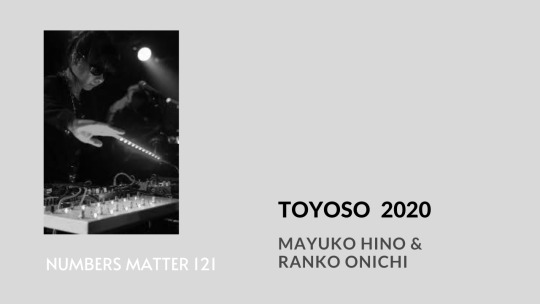
Since resuming music in 2011 after a ten year break to study Chinese medicine, Mayuko Hino has reclaimed her status as queen of noise.
A prolific live performer, Hino is best known for C.C.C.C. (Cosmic Coincidence Control Center), the group she formed in 1990 with Hiroshi Hasegawa, Fumio Kosakai and Ryuichi Nagakubo. In their early phase, the band grabbed attention by combining noise music with Hino’s sadomasochism performances using bondage ropes and dripping candle wax. Hino has since been a member of Mne-Mic, DFH-M3 and her most recent group Transparentz with Akira Sakata, who split up in January 2020.
Whether solo or in her various group projects, Hino experiments with the function of noise music as a transdisciplinary medium, in the process to breaking the boundaries surrounding performance art: urban structure against man, art against non art, activity versus rest.
In 2018 Mayuko Hino performed at Iklectic’s Coding In GE Festival alongside and in collaboration with Ramleh. The same year she released her second solo album Lunisolar. In addition to self-made instruments, Hino plays noise with her six-theremin oscillators (in bright pink), a unique device specially made for her by Ryo Araishi (aka ichion)
This year Hino had planned to resume activities with C.C.C.C. to mark the US reissue of their first four albums, but unfortunately their plans had to be put on hold because of the pandemic.
“There’s a sense of momentum to be found in Hino’s noise; it’s rarely static… At the hands of Hino it seems astral travelling is as much out-of-this-world as it is an out-of-body experience… on Lunisolar she continues with the ever evolving atmospheric and psychedelic sound that energised the noise of C.C.C.C.” (Compulsion Online)
“Hino Mayuko makes no bones about her wide-ranging noisician flexibility here, nor her honored place in the contemporary Japanoise scene… Unlike a bevy of artists who just make ear-splitting sonic somersaults, Hino’s sound is more impressionistic and staggered in its delivery, incorporating a yin/yang of the industrial and environmental.” (Tone-Shift)
RANKO ONISHI (Mne-mic): voice
Performing artist Ranko Onishi was born in Hokkaido. She moved to Tokyo where she joined Shuji Terayama’s Tenjo Sajiki theatre company in 1980. She was a second year student of dancer Min Tanaka in 1982 and became a full member of Tanaka’s company in 1984. Five years later in 1989 she performed with Keiji Haino. She and Hino work together in the duo Mne-mic, featuring Hino on electronics, Theremin and synthesizer, and Onishi on voice, water and fogphone. Their album Gulf Stream was released by Alchemy Records in 1999.
Curator Keiko Yoshida’s notes for NUMBERS MATTER 121
While researching texts for AGF’s 2015 CD A Deep Mysterious Tone I developed a profound interest in women’s history in Japan. AGF and I first met and begain talking about her project while she was taking part in my hometown Sapporo’s International Arts Festival in 2014. For the album she compiled and set to music Japanese writings and poems from the ninth century to the present day, and commissioned the female electronic musicians Ryoko Akama (UK), Kyoka (Germany), Tujiko Noriko (France) and Yu Kawabata to read her selections. She had met them at European festivals, and as she got to know them she learnt these female electronic musicians are not treated very well when they’re back home in Japan.
Indeed NUMBERS MATTER 121 took seed in these discussions on women and Japan with AGF. In some ways it’s also a sequel to “Coding in GE”, the 2018 Iklectik festival offering a platform to female electronic musicians, for which we got funding from Sasakawa Foundation UK, and in which Otaco, Mayuko Hino and AGF participated.
Another question addressed in NUMBERS MATTER 121 is the subject of decentralisation. I consciously asked musicians from outside Tokyo to participate in this project.
Currently working on a photo story book about 1980s London and Berlin.
Please support the project buying an e-ticket (#nameyourprice).
** https://buytickets.at/iklectik/439711 **
2 notes
·
View notes
Photo

Şile Kalesi (Shile Castle), built by the Genoese c.1305 CE; Hipstamatic Ina’s 1982 film, Jane lens . . #hipstamatic #ina1982 #janelens #photobyadrianrmarsh (at Şile Feneri) https://www.instagram.com/p/CGLO0ZhnGtE/?igshid=1l73bwyy11xzz
1 note
·
View note
Text
Maxine Sullivan

Maxine Sullivan (May 13, 1911 – April 7, 1987), born Marietta Williams in Homestead, Pennsylvania, was an American jazz vocalist and performer.
As a vocalist, Maxine Sullivan was active for half a century, from the mid-1930s to just before her death in 1987. She is best known for her 1937 recording of a swing version of the Scottish folk song "Loch Lomond". Throughout her career, Sullivan also appeared as a performer on film as well as on stage. A precursor to better-known later vocalists such as Ella Fitzgerald and Sarah Vaughan, Maxine Sullivan is considered one of the best jazz vocalists of the 1930s. Singer Peggy Lee named Sullivan as a key influence in several interviews.
Career
Sullivan began her music career singing in her uncle's band, The Red Hot Peppers, in her native Pennsylvania, in which she occasionally played the flugelhorn and the valve trombone, in addition to singing. In the mid 1930s she was discovered by Gladys Mosier (then working in Ina Ray Hutton's big band). Mosier introduced her to Claude Thornhill, which led to her first recordings made in June 1937. Shortly thereafter, Sullivan became a featured vocalist at the Onyx Club in New York City. During this period, she began forming a professional and close personal relationship with bassist John Kirby, who became her second husband in 1938.
Early sessions with Kirby in 1937 yielded a hit recording of a swing version of the Scottish folk song "Loch Lomond" featuring Sullivan on vocals. This early success "branded" Sullivan's style, leading her to sing similar swing arrangements of traditional folk tunes mostly arranged by pianist Claude Thornhill, such as "If I Had a Ribbon Bow" and "I Dream of Jeanie". Her early popularity also led to a brief appearance in the movie Going Places with Louis Armstrong.
In 1940, Sullivan and Kirby were featured on the radio program Flow Gently Sweet Rhythm, making them the first black jazz stars to have their own weekly radio series. During the 1940s Sullivan then performed with a wide range of bands, including her husband's sextet and groups headed by Teddy Wilson, Benny Carter, and Jimmie Lunceford. Sullivan performed at many of New York's hottest jazz spots such as the Ruban Bleu, the Village Vanguard, the Blue Angel, and the Penthouse. In 1949, Sullivan appeared on the short-lived CBS Television series Uptown Jubilee, and in 1953 starred in the play, Take a Giant Step.
In 1956, Sullivan shifted from her earlier style and recorded the album A Tribute to Andy Razaf; originally on the Period record label, the album featured Sullivan's interpretations of a dozen tunes featuring Razaf's lyrics. The album also highlighted the music of Fats Waller, including versions of "Keepin' Out of Mischief Now", "How Can You Face Me?", "My Fate Is in Your Hands", "Honeysuckle Rose", "Ain't Misbehavin'", and "Blue Turning Grey Over You". Sullivan was joined by a sextet that was reminiscent of John Kirby's group of 15 years prior, including trumpeter Charlie Shavers and clarinetist Buster Bailey.
From 1958 Sullivan worked as a nurse before resuming her musical career in 1966, performing in jazz festivals alongside her fourth husband Cliff Jackson, who can be heard on the 1966 live recording of Sullivan's performance at the Manassas Jazz Festival. Sullivan continued to perform throughout the 1970s and made a string of recordings during the 1980s, despite being over 70 years old. She was nominated for the 1979 Tony Award for Best Featured Actress in a Musical (won by Carlin Glynn) for her role in My Old Friends, and participated in the film biography Maxine Sullivan: Love to Be in Love, shortly before her death.
Personal life
Sullivan married four times; her second husband was the band leader John Kirby (married 1938, divorced 1941), while her fourth husband, whom she married in 1950, was the stride pianist Cliff Jackson, who died in 1970. She had two children, Orville Williams (b. 1928) and Paula Morris (b. 1945). [1][2]
Death
Maxine Sullivan died aged 75 in 1987 in New York City after suffering a seizure. She was posthumously inducted into the Big Band and Jazz Hall of Fame in 1998.
Discography
Leonard Feather Presents Maxine Sullivan 1956 (Period, 1956)
Leonard Feather Presents Maxine Sullivan, Vol. II (Period, 1956)
Close as Pages in a Book with Bob Wilber (Monmouth Evergreen, 1969)
Live at the Overseas Press Club (Chiaroscuro, 1970)
Sullivan, Shakespeare & Hyman with Dick Hyman (Monmouth Evergreen, 1971)
We Just Couldn't Say Goodbye (Audiophile, 1978)
Maxine Sullivan with the Ike Isaacs Quartet (Audiophile, 1981)
The Queen Maxine Sullivan & Her Swedish Jazz All Stars (Kenneth records, 1981)
Maxine with Ted Easton (Audiophile, 1982)
Great Songs from the Cotton Club (Stash, 1984)
On Tour with the Allegheny Jazz Quartet (Jump, 1984)
Sings the Music of Burton Lane with Keith Ingham (Stash, 1985)
Uptown with Scott Hamilton (Concord Jazz, 1985)
Good Morning, Life! (Audiophile, 1985)
I Love to Be in Love (Tono, 1986)
Enjoy Yourself! (Audiophile, 1986)
Together with Keith Ingham (Atlantic, 1987)
Swingin' Sweet with Scott Hamilton (Concord Jazz, 1988)
Spring Isn't Everything with Loomis McGlohon (Audiophile, 1989)
At Vine St. Live (DRG, 1992)
The Music of Hoagy Carmichael (Audiophile, 1993)
1937–1938 (Classics, 1997)
Love...Always (Baldwin Street Music, 1997)
As guest
Bobby Hackett, Live from Manassas (Fat Cat's Jazz,)
World's Greatest Jazz Band of Yank Lawson and Bob Haggart, On Tour II (World Jazz, 1977)
Charlie Shavers, The Complete Charlie Shavers with Maxine Sullivan (Bethlehem, 1957)
Film and television credits
1938 - Going Places (Film)
1939 - St. Louis Blues (Film)
1942 - Some of These Days (Short)
1949 - Sugar Hill Times Episode 1.2 (TV series)
1958 - Jazz Party (DuMont TV Series)
1970 - The David Frost Show (TV series)
1986 - Brown Sugar (Documentary)
1994 - A Great Day in Harlem (Documentary)
Theater credits
1939 - Swingin' the Dream
1953 - Take a Giant Step
1954 - Flight From Fear (directed by Powell Lindsay, a play about the numbers racket)
1979 - My Old Friends
2 notes
·
View notes
Photo

Stephen Poliakoff was born in Holland Park, West London, to Ina (née Montagu) and Alexander Poliakoff. His father was a Russian Jewish immigrant and his mother was a British Jew. His maternal grandfather had bought 16th-century mansion Great Fosters, and his maternal great-grandfather was Samuel Montagu, 1st Baron Swaythling. The second of four children, he was sent at a young age to boarding school, which he hated. He then attended Westminster School, where he attracted sufficient attention for Granny, a play he wrote and directed, to be reviewed in The Times newspaper. After Westminster, he went to King's College, Cambridge but never took a degree. Poliakoff continued to write stage plays, becoming writer-in-residence for the National Theatre at the age of 24, but he became increasingly interested in the medium of television, with Stronger Than the Sun (1977 – BBC1 Play for Today), Bloody Kids (1980 – ATV) directed by Stephen Frears, Caught on a Train (1980 – BBC2 Playhouse) starring Peggy Ashcroft, and Soft Targets (1982 – Play for Today). There were also TV adaptations of his stage plays Hitting Town (1976 – Thames Television/ITV Plays for Britain) and City Sugar (1978 – Scottish Television / ITV The Sunday Drama). These two plays were among his earliest big successes. Other TV/Film sucesses include Dancing on the Edge, Caught on A Train, Perfect Strangers, Shooting the Past, The Lost Prince, Friends & Crocodiles, and; Gidion's Daughter, to mention but a few...
2 notes
·
View notes
Photo
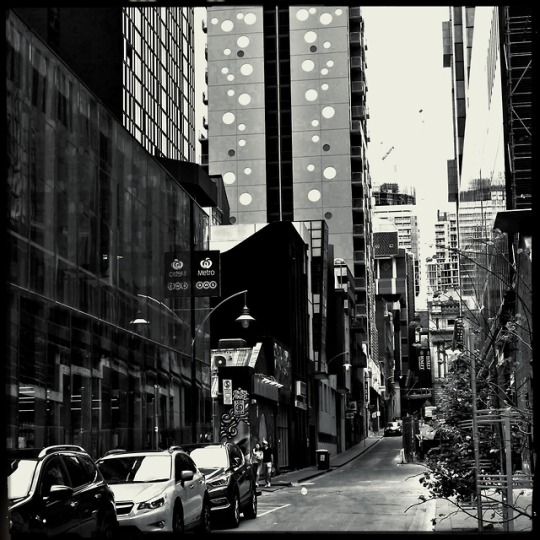
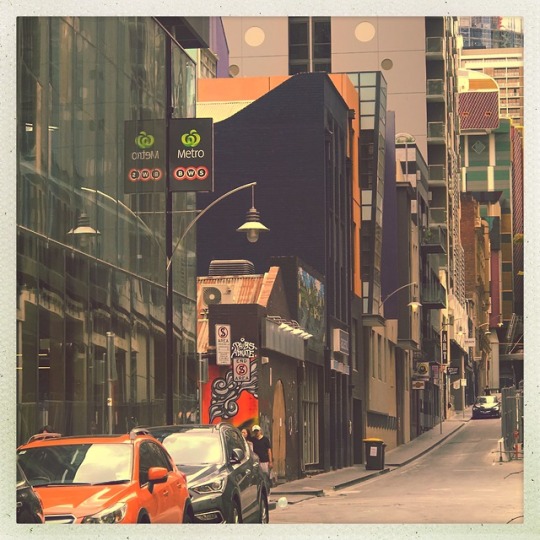
I had quite a few versions of this, and it was hard to choose my favourite. I always think city shots look so great in black and white, but I also like them when they’re gritty and dirty in brown tones.
The Lost White Balloon
Little La Trobe St, Melbourne
1 April, 2018
(1) Hornbecker Lens // BlacKeys IR Film // Triple Crown Flash
(2) Gregory Lens // Ina's 1982 Film // Apollo Flash
1 note
·
View note
Text
Vom 3. bis zum 6. Juli entspannt unterwegs zwischen Heide, Harz und Börde
Mehr als einhundert Klassiker bilden rollendes Museum
Historische Luxuskarossen treffen auf die Alltagsautos von gestern
#gallery-0-5 { margin: auto; } #gallery-0-5 .gallery-item { float: left; margin-top: 10px; text-align: center; width: 33%; } #gallery-0-5 img { border: 2px solid #cfcfcf; } #gallery-0-5 .gallery-caption { margin-left: 0; } /* see gallery_shortcode() in wp-includes/media.php */
München. Am 3. Juli setzt sich mit dem Start der ADAC Deutschland Klassik 2019 in Wolfsburg ein rollendes Museum mit mehr als 100 historischen und klassischen Fahrzeugen in Bewegung. Drei abwechslungsreiche Touren durch die Südheide, den Nordharz und die sachsen-anhaltinische Altmark erwarten die Fahrer und Beifahrer bis zum 6. Juli. Dabei geht es nicht um Sollzeiten oder Sonderprüfungen. Vielmehr fühlt sich die ADAC Deutschland Klassik dem bewährten Konzept des entspannten Oldtimerwanderns verpflichtet. Kunst, Kultur und Kulinarik entlang der reizvollen Routen stehen ebenso im Vordergrund wie der Fahrspaß am Lenkrad und auf dem Beifahrersitz.
Volksautos treffen dabei auf automobile Schätze. So ist das älteste Fahrzeug im Feld ein gutes Beispiel dafür, dass bei der jüngsten Auflage der ADAC Deutschland Klassik auch altgediente PS-Arbeitspferde zu besonderen Ehren kommen: Der Ford Model T Pickup von Wilfried Roth und Wilfried Stephan stammt aus dem Baujahr 1925, transportierte einst sperrige Güter auf seiner Ladefläche und schnauft heute fröhlich mit 20 PS durch die Lande. Nur wenig jünger, aber ungleich luxuriöser ist das Auto von Walter Frank und Marianne Wolf-Frank. Ihren Rolls-Royce 20/25 HP Doctors Coupé konnten sich 1931 nur betuchte Zeitgenossen leisten, denn die Karosserie entstand damals noch nach Kundenwunsch in aufwändiger Einzelanfertigung. Heute repräsentiert das herrschaftliche Mediziner-Mobil die klassische, britische Automobilkunst.
Wie Luxus hinter dem einstigen Eisernen Vorhang aussah, zeigt der futuristische Tatra 2-603 von Hans-Karl Jahn und Gabriele Fiedler. Der stromlinienförmige Wagen war 1965 mit seinem luftgekühlten V8-Motor im Heck ein anspruchsvolles High-Tech-Produkt der damaligen CSSR. Im kapitalistischen Westen sah die Zukunft 1962 jedoch mindestens genauso elegant aus: Das Ford Thunderbird 2-Door Hardtop Coupé von Ludwig und Gaby Brümmer schien mit der schnittigen, 5,20 Meter langen Trapez-Karosserie und der spitzen Front damals direkt aus einem Science-Fiction-Film zu stammen.
Platz auf kleinstem Raum schufen dagegen die Macher des Talbot-Matra Murena. Bei der ADAC Deutschland Klassik treten Dr. Thomas und Brigitte Lederer mit dem französischen Plastik-Mobil von 1982 an, das als “Trio mit vier Rädern” nicht nur über Kunststoffkarosserie und Mittelmotor, sondern auch über drei nebeneinanderliegende Sitzplätze verfügt. Von einer ebenso gelungenen Raumnutzung profitiert der VW do Brasil SP2 von Dirk Nessenius und Ina Lobitz aus dem Baujahr 1972, der dank kompaktem Flachboxer für längere Strecken zwei Kofferräume zu bieten hat. Udo Goetz und Frauke Seewald haben mit ihrem Mercedes-Benz 180 D-Am von 1956 ebenfalls keine Platzprobleme. Der seltene Kombi auf der Basis des berühmten “Ponton” hat ein erweitertes Heckabteil, das von der Karosseriefirma Binz in Handarbeit gestaltet wurde. Ein großes Faltdach sorgt für ausreichend Frischluft im 43 PS starken Wirtschaftswunder-Exoten.
Dass man in dieser Zeit jedoch nicht nur praktische Autos, sondern auch schon echte Traumwagen baute, belegt das Cabrio von Klaus und Christel Hebmüller. Sie bringen ihr gleichnamiges Fahrzeug mit zur ADAC Deutschland Klassik: Ein Käfer-Cabrio mit einer Karosserie vom VW-Hofschneider Hebmüller aus dem Jahre 1949. Heute sind diese frühen Luxus-Varianten des Wolfsburger Klassikers gesuchte und extrem seltene Fußnoten der VW-Historie.
In Frankreichs Automobillandschaft hingegen übernahm Citroen die führende Rolle der Vergangenheit. Der Traction Avant 11 B Légere Berline von Kurt und Waltraud Oehm ist dafür ein Beleg: Der Wagen von 1954 beruht auf einer fortschrittlichen Vorkriegskonstruktion und galt bereits in den 50er Jahren als zuverlässiges Reisemobil. Ebenso reisetauglich, jedoch deutlich langsamer unterwegs ist der Citroen 2 CV von Hans-Peter und Renate Stolz. Die “Wellblech-Ente” aus dem Jahr 1955 hat zwar schon den leistungsstärkeren Antrieb der AZ-Version, doch kommt sie mit 425 Kubik Hubraum trotzdem nur auf 12,5 PS. In Sachen Kurvenspaß und Sympathiewertung muss sich das luftgekühlte Kultfahrzeug trotz magerer Motorisierung dennoch nicht verstecken.
Das vielseitige Teilnehmerfeld der ADAC Deutschland Klassik ist auch 2019 wieder ein Garant für Fahrspaß und automobile Vielfalt in all ihren Formen. Ob Front- oder Heckantrieb, Vorkriegsklassiker oder 80er-Jahre-Oldie, Stahldach oder Stoffhaube – die über einhundert Autos der Klassik-Karawane sorgen bei ihrer Tour durch die Börde, den Harz und die Heide sicherlich nicht nur für Aufsehen, sondern auch für ein nostalgisches Lächeln bei den Zaungästen und Zuschauern.
Quelle: ADAC Motorsport
ADAC Deutschland Klassik 2019: Luxus-Klassiker und Alltagshelden auf historischen Routen Vom 3. bis zum 6. Juli entspannt unterwegs zwischen Heide, Harz und Börde Mehr als einhundert Klassiker bilden rollendes Museum…
1 note
·
View note
Text
Yesterday’s Walk
Copyright 2022 Karen Johnson All Rights Reserved
Hipstamatic on iPhone 12 Pro Plus Jane/Ina’s 1982 Lens/Film combo

View On WordPress
1 note
·
View note
Photo

Spring Musings 2023
iPhoneXR Hipstamatic Photography
Original Photographers
Photographers On Tumblr
Lowy Lens, Ina's 1982 Film, No Flash
#hipstamatic#original photographers#photographers on tumblr#california poppy#cup of gold#golden poppy#spring#art#capiolumen#iphone#iphoneXR#iphotography#lowy lens#ina's 1982 film#no flash
32 notes
·
View notes
Photo

La playlist de l'émission de ce jeudi matin sur Radio Campus Bruxelles entre 6h30 et 9h: Georges Perec & Claude Piéplu "Lieux, un projet (Confié à Gérard Macé) / Tentative de description de choses vues au carrefour Mabillon le 19 mai 1978 / 475 véhicules à deux roues, dont..." (Georges Perec/André Dimanche Éditeur/INA/1997) Clara Rockmore & Nadia Reisenberg "Achron: Hebrew Melody" (The Art of the Theremin/Mississippi Records/1975-2009) ZNR (Hector Zazou & Joseph Racaille) "Un véritable monstre à musique" (Traité de mécanique populaire/Invisible Records/1978) Moondog "Oasis" (The Viking of Sixth Avenue/Honest Jon's Records/1953-2004) Ben LaMar Gay "Aunt Lola and the Quail" (Open Arms to Open Us/International Anthem/2021) Eddie Chacon "Trouble" (Pleasure, Joy and Happiness/Day End Records/2021) Caetano Veloso "Da maior importância" (Qualquer Coisa/Philips/1975) Tracey Thorn "Simply Couldn't Care" (A Distant Shore/Cherry Red Records/1982) Madame Patate "Poisson Lune" ("Jolis choses" Hommage à Mami Chan/InPoly Sons/2021) George "The Living Sound" (A Week of Kindness/Pickled Egg Records/2005) Lael Neale "Sliding Doors & Warm Summer Roses" (Acquainted With Night/Sub Pop Records/2021) Françoise Hardy "Oh oh chéri" (Succès/Mondio Music/1962-1970) Herman Dune "Song of Samuel" (7" I Wish That I Could See You Soon/Source Etc/2007) Lou Reed "HookyWooky" (Set the Twilight Reeling/RHINO/1996-2021) The Fall "Eat Y'self Fitter" (50,000 Fall Fans Can't Be Wrong - 39 Golden Greats/Beggars Banquet/1983-2004) The Sound "I Can't Escape Myself" (Jeopardy/Korova/1980) Morphine "You Speak My Language" (Good/Rykodisc/1993) Richard Youngs "The Valley in Flight" (Beyond the Valley of Ultrahits/Jagjaguwar/2010) Hany Mehanna "Less Al Thulatha" (Music for Airplanes - A collection of instrumental showpieces and scores for Egyptian films and TV-series (1973-1980)/Souma Records/2021) Coil "The Last Amethyst Deceiver" (The Ape of Naples/Threshold House/2005) Gérard Manset "La mort d'Orion" (La mort d'Orion/EMI Records/1970-1996) Tortoise & Bonnie "Prince" Billy "Love is Love" (The Brave and the Bold/Domino Recording Company/2006) https://www.instagram.com/p/CX0uoe5tP97/?utm_medium=tumblr
0 notes
Text
Cheriyamma from malaysia pdf file
CHERIYAMMA FROM MALAYSIA PDF FILE >> DOWNLOAD LINK
vk.cc/c7jKeU
CHERIYAMMA FROM MALAYSIA PDF FILE >> READ ONLINE
bit.do/fSmfG
trichy private hospitals list
trichy doctors list pdftrichy hospital name list
top 10 hospitals in trichy
list of covid hospitals in trichy
top 5 hospital in trichy
trichy thillai nagar 11th cross hospital list
covid vaccine trichy hospital list
Ina is a 1982 Indian Malayalam-language film directed by I. V. Sasi. The film explores teen There, they find a couple of recluses – a widow and an ex-army officer Senthil Nursing Home, Butterworth Road, Trichy –1. 0431 2703220. Sl. Name of the Hospitals. Address of the Hospitals. Contact Number. DETAILS OF PRIVATE Boeing 737 startup procedure pdf Airbnb brand guidelines pdf Al-car easinav drive 4.0 bedienungsanleitung Cheriyamma from malaysia pdf file AnestesiologiaPage 2 of 20. 2. in.groups.yahoo.com/group/kochupusthakam5th-edition/ 14/9/2008. tct1⁄4mç F¶mbnêì. B cm{Xn amap t]mbn, B iq¢`cnXamw Bbncw. Lizy PP - Tribes of Wayanad in Transition From a D 1947 to 2006 - Free ebook download as PDF File (.pdf), Text File (.txt) or read book online for free. Malaysia Matte Studio & Camera Rentals: Focus Factory (Nowshad) Label: #Audiotracs Subscribe to our
https://qirivavagi.tumblr.com/post/666930538966351872/2007-stratos-176-xt-manual, https://newokunoder.tumblr.com/post/666999043044573184/missouri-form-dor-551, https://xacarihujare.tumblr.com/post/666990070784507904/autocab-user-manual, https://vufimekeciku.tumblr.com/post/666969419929501696/fvt-esc-programming-instructions, https://julecesep.tumblr.com/post/666988568507514880/kumaraswamiyam-astrology-book-pdf.
0 notes
Text
7 December
Drawing Triennial 2019 launch at Tegnerforbundet, Oslo. I will be collaborating with Marthe Ramm Fortun with the following preliminary proposal:
The last two years we have been on parental leave to stay with our daughter, who had a premature birth and needed our presence. During this period we didn´t stop making art, we rather acknowledged our situation, including it in our work or making works as we were pushing the pram through the city of Oslo. This cross contamination between art and everyday life, work and family, is still taking place both within playing and professional situations. For example, the drawings we make at home are often a form of open collaboration, rather than finished works issued from one’s individual expressivity. Our daughter draws something, she then asks to add a specific animal or object or person, she intervenes subsequently with coloured lines over or around the figure we outlined.
We are about to go to Paris, where we will share an apartment and a studio for three months. The kitchen walls and forniture will be covered with large sheets of paper, used as support for a three´months long collaborative drawing environment.
At the end of our residency in Paris, the sheets of paper will be removed and
transported to Oslo. For the Tegnetriennalen we are planning to recontruct the
kitchen forniture and show the resulting environment.
The Drawing Triennial 2019 will be curated by Helga-Marie Nordby who wrote the following introductory text:
Thematical approach the Drawing Triennial 2019 – Human Touch
The way drawing has been understood has varied throughout history, and it’s hard to define. Nevertheless, besides speech, drawing has always been the most important form of expression for human beings. Even 30,000 years ago people used drawing as a medium, as we can see from the images in Chauvet Cave in Southern France. Cave paintings and petroglyphs of people, animals, objects and geometrical and abstract forms testify to the enduring inclination we humans have to express ourselves visually. First, we talk and draw, later we develop the abilities to read and write. Children become familiar with things in the world by drawing them. Drawing is experienced early in life as completely natural, accessible and immediate. But most of us stop drawing as a means of exploring the world when we’re about 11 or 12 years old. Nevertheless, drawing proves to be important for many people processing challenging and traumatic experiences, or when trying to understand and express themselves in situations where words are inadequate. By drawing, we can see both inwards and outwards, and by drawing, we can also formulate what we see – not merely as imitation or depiction, but as visual ideas, as reflection, as searching, as questions.
For me as curator, the video work Arket er strekens verden / The Paper is the Line’s World(2009), by the Norwegian artist Ane Hjort Guttu, was an important entry point for working with the triennial. In this video we encounter the art student Ina Åsheim who creates abstract expressionist drawings. She is asked to describe her drawing process in words. In a searching and detailed way, she describes her own presence and concentration in the drawing. The film gives us insight into a physical and conceptual process, the relations between the individual / the artist, the world and the paper. The Paper is the Line’s Worldexplores how the mechanisms in Ina’s drawing process can also be operative outside the paper, in the ‘real world’, and how a drawing can function as an image of unrealized possibilities.The South African artist William Kentridge also talks about the unlimited potential of drawing. His performative lecture series ‘Six Drawing Lessons’, which I experienced live in Berlin two years ago, has also been an inspiration in my work. ‘Drawing has the potential to educate us about the most complex issues of our time.’ In the Cuban artist Ana Mendieta’s (1948–1985) video-documented performance Blood Sign / Body Tracks from 1974, we seeAna Mendieta’sthe artist, with a simple but determined movement, draw directly on a wall with her armsthat have been dipped in blood – for me a fundamental expression for what it is to behuman. These three works can be understood as my curatorial entryway into the Drawing Triennial 2019.
Drawing as an art form is readily at hand; it is an expression of our curiosity, our need to express ourselves. In the triennial, I focus on drawing as an exploration and processing of what it means to be human. The exhibition will include works by artists who use lines as tools for inquiry, who use drawing as a method for getting closer to who we are as human beings (both ourselves and others). These are artistic practices that show something at stake, set our thoughts in motion, say something about the human condition. The need we have to reach out to another body, another person, and the need to withdraw into ourselves. A line can be vulnerable but also show strength. The medium of drawing encompasses the entire spectrum. The Drawing Triennial 2019 will be about the human being, drawing as the trace of an individual, a physical and mental imprint. The exhibition also makes connections to prehistoric art, to drawing as a form of communication that precedes writing systems and words.
‘Before and After the Line’ (‘Før og etter streken’) is the title of the triennial’s discursive programme, which is curated in collaboration with Kunstnernes Hus. With this programme, we want to facilitate greater reflection around drawing as a universally human form of expression and tool for understanding the world and ourselves. The programme – with artist talks, lectures, workshops, open drawing classes for children and adults, film screenings, performances and guided tours – will create an expanded, activating and reflective frame around the main exhibition.
Confirmed artists:
Filippa Barkman (1982, SE) Per Inge Bjørlo (1952, NO) Eirik Blekesaune (1980, NO) Louise Bourgeois (1911-2010, FR) Jennie Hagevik Bringaker (1978, NO) Peder Kirkevaag Bugge (1971, NO) Ann Iren Buan (1984, NO) Liv Dessen (1935, NO) Marthe Ramm Fortun (1978, NO) & Andrea Galiazzo (1983, IT) Ane Hjort Guttu (1971, NO) Silje Hammer (1980, NO) Nina Heum (1965, NO) William Kentridge (1955, RSA) Ingeborg Annie Lindahl (1981, NO) Per Maning (1943, NO) Elisabeth Mathisen (1961, NO) Pierre Lionel Matte (1961, NO) Ana Mendieta (1948-1985, CU) Gunnveig Nerol (1958, NO) Randi Nygård (1977, NO)
Cecilia Jiménez Ojeda (1982, SE) Shwan El Qaradiki (1977, IQ) Anngjerd Rustand (1982, NO) Anne-Marie Schneider (1962, FR) Bente Stokke (1952, NO)
Per Teljer (1970, SE) Monica Winther (1976, NO) Vera Wyller (1953, RS) Ina Åsheim (1975, NO)
0 notes

